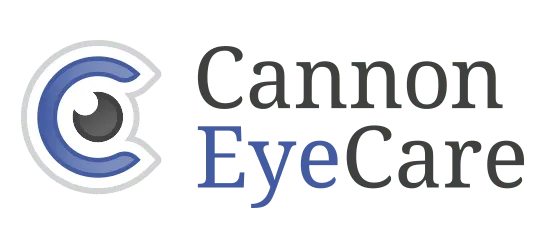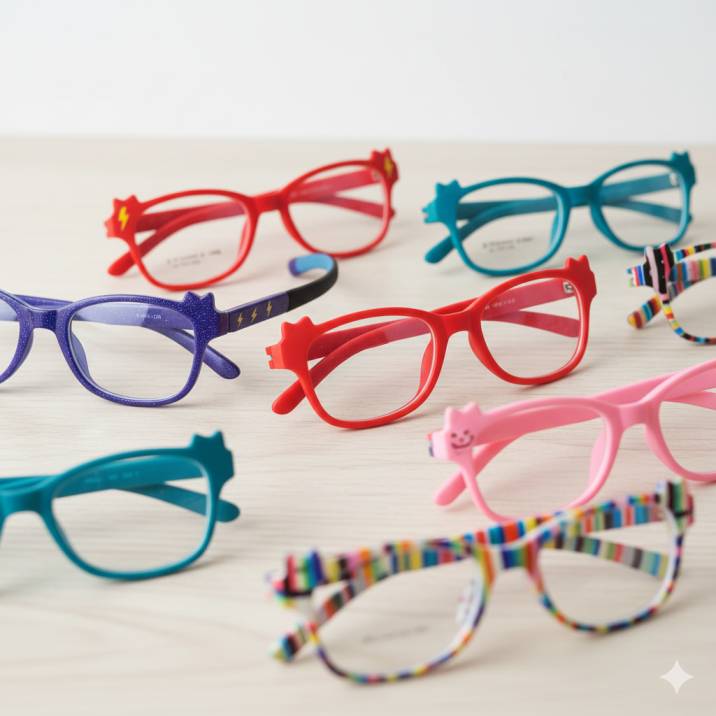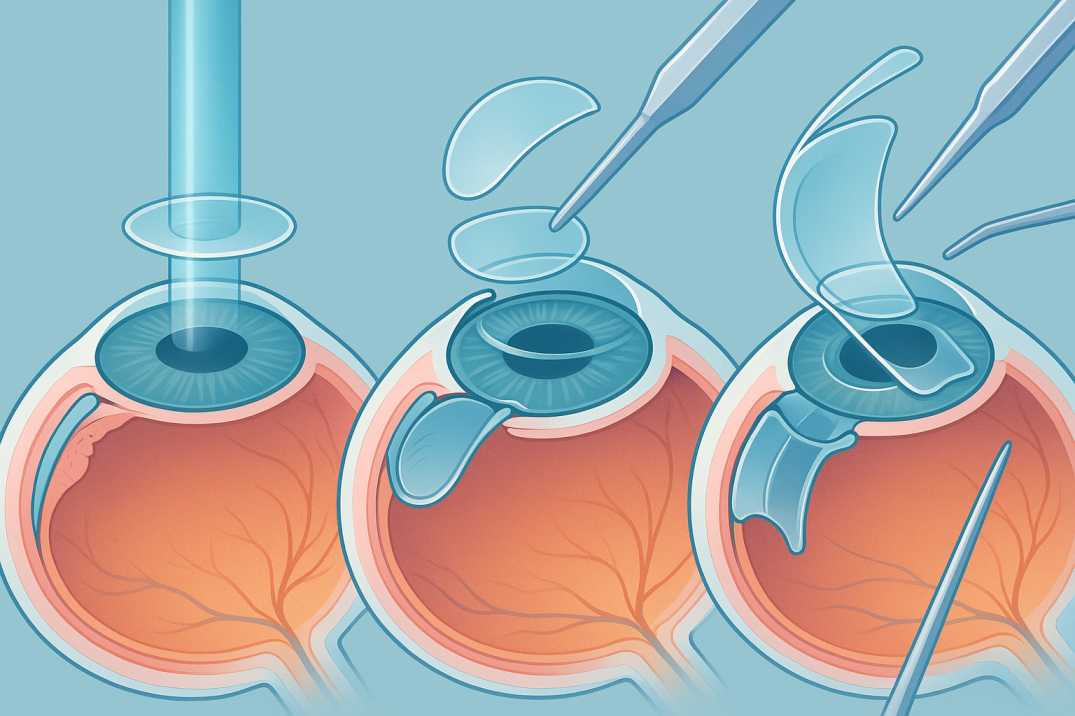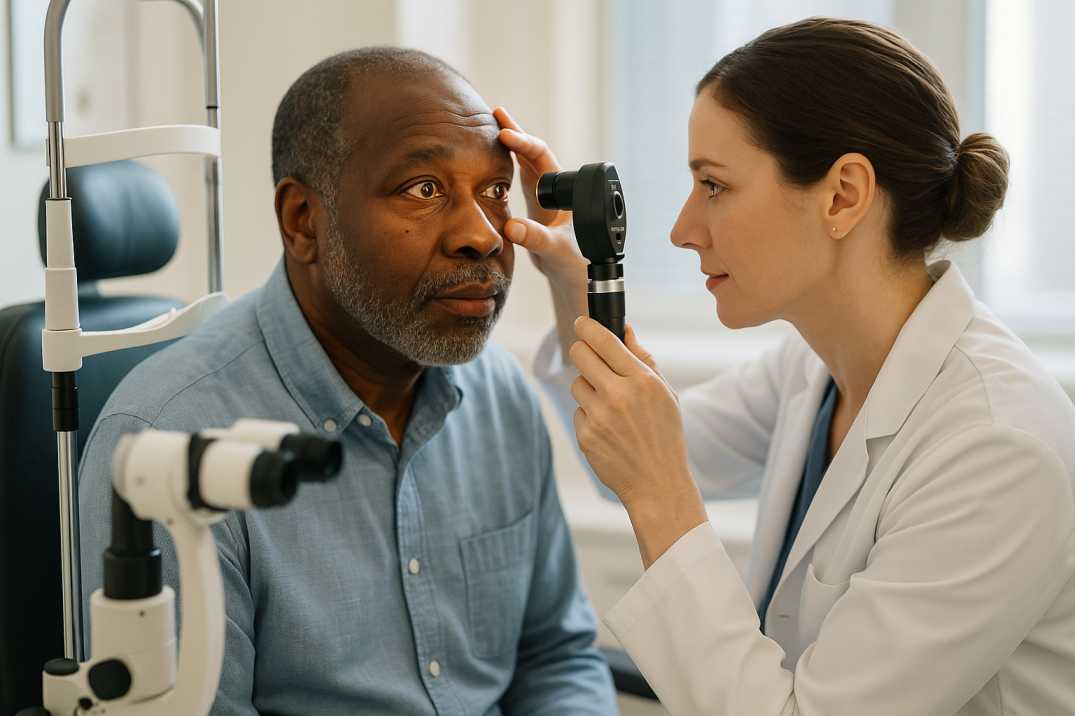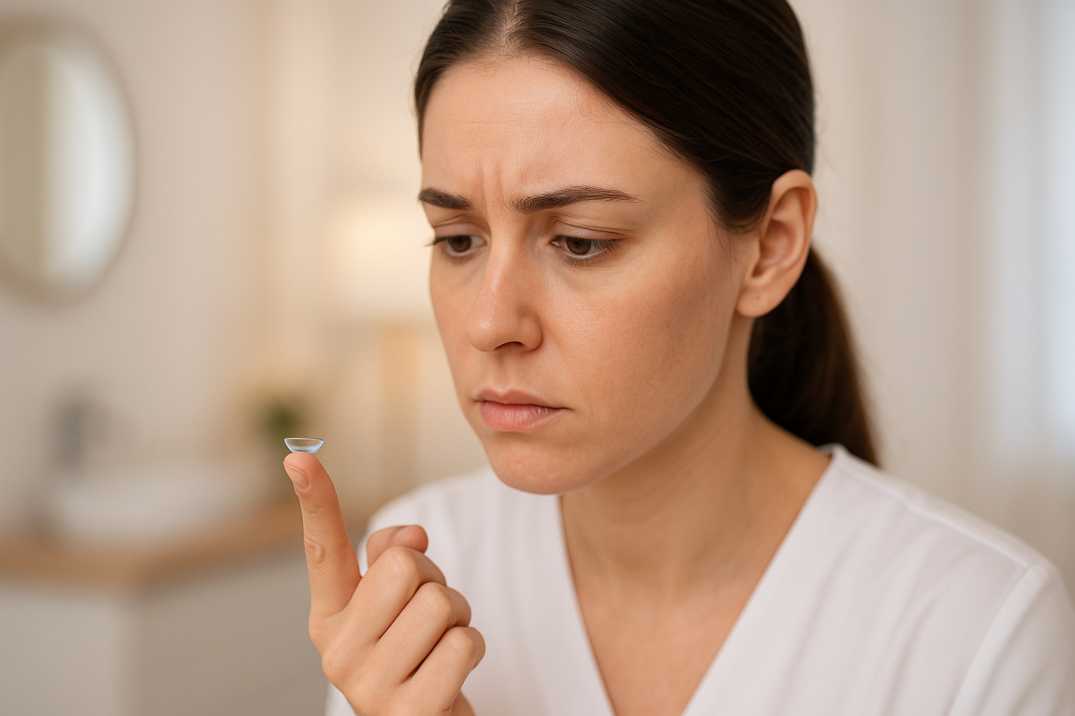School Vision Test Failed: Next Steps for Your Child’s Eye Health
What Does a Failed School Vision Screening Really Mean?
Receiving notification that your 5-year-old failed their school vision screening can feel overwhelming. You might wonder: Does my child need glasses? Is there something seriously wrong with their eyes? Will this affect their learning?
Take a deep breath. A failed school vision screening doesn’t necessarily mean your child has a vision problem—it simply means they need a more comprehensive evaluation by an eye care professional. Understanding what happens next and taking the right steps can ensure your child receives the care they need to see clearly and succeed in school.
This guide provides everything parents need to know about failed school vision screenings, from understanding what school vision test results mean to choosing the right pediatric eye exam and supporting your child’s visual development.
Understanding School Vision Screenings: What They Test and What They Miss
What School Vision Screenings Actually Measure
School vision screenings typically use a standard vision chart where your child reads lines of progressively smaller letters, testing distance visual acuity one eye at a time. For younger children who cannot yet read letters, photo-screening technology may be used, which checks special light reflexes in your child’s eye to determine if each eye is seeing and functioning properly.
Vision screening requirements vary significantly by state, with some requiring annual screenings and others testing only at specific grade levels. The primary goal is simple: to answer a single question – does the child need further assessment?
The Limitations of School Screenings
While school vision screenings serve an important public health function, they have significant limitations that parents should understand:
Limited Scope of Testing School screenings primarily test distance vision acuity but cannot assess near vision acuity, focusing abilities, eye tracking skills, or how well the eyes work together – all crucial for reading and computer use. The screening also provides no information about your child’s overall eye health, meaning a child could have 20/20 sight but still have a serious eye disease.
Testing Environment and Personnel Most vision screenings are performed by volunteers or school personnel who may not be extensively trained in conducting screenings or assessing results. Additionally, limited testing equipment, non-standardized testing distances, inappropriate room lighting, and inadequate maintenance of screening equipment can all impact test results.
What Screenings Cannot Detect? School vision screenings can only uncover some vision problems, such as severe lazy eye or myopia, but cannot effectively identify most visual problems experienced by children. These preliminary screens focus solely on distance vision and completely disregard potential issues related to eye movement skills, focusing ability, peripheral awareness, binocular coordination, and near vision.
Why Your 5-Year-Old Might Have Failed: Common Reasons
There are numerous reasons why your child might not have passed their school vision screening, and many are easily treatable:
Common Refractive Errors in 5-Year-Olds
The five major vision issues detected by most pediatric eye exam equipment include:
Myopia (Nearsightedness) Current research shows childhood myopia rates have increased dramatically. Global prevalence reached 35.8% in 2023, with projections indicating this will affect 39.8% of children by 2050. Today’s youth face a higher risk due to increased screen time and reduced outdoor activity.
Hyperopia (Farsightedness). Farsighted Children can see distant objects better than near ones. Many need glasses at a younger age, though some outgrow the need completely or require reduced prescriptions as they develop.
Astigmatism. This occurs when the cornea or lens has an irregular curved shape, causing blurred vision at all distances.
Anisometropia: Significantly different prescriptions between the two eyes can lead to amblyopia if not corrected.
Strabismus (Eye Misalignment): Crossed or wandering eyes that don’t work together properly, potentially causing double vision or decreased depth perception.
Non-Vision Related Factors
Sometimes children fail screenings for reasons unrelated to their actual vision:
- Difficulty understanding the instructions or being unfamiliar with the testing environment
- Temporary vision issues due to allergies or illness can affect screening results
- Fatigue, anxiety, or simply having a bad day
- Over-calling by automated machines, particularly for myopia and astigmatism in children
Understanding Your Child’s School Vision Test Results
When you receive notification about your child’s failed screening, the school vision test results typically include basic information about which eye failed and the type of screening conducted. However, these preliminary results don’t provide detailed information about the specific vision problem or its severity.
Age-Related Considerations for 5-Year-Olds
Visual acuity screening has good positive predictive value for vision loss in 4- and 5-year-old children, with positive predictive values of 77.8% and 87.5% respectively, according to recent research. This means that when 5-year-olds fail vision screenings, there’s a high likelihood they do have a vision issue that warrants professional evaluation.
Next Steps: What to Do After a Failed Screening
Immediate Actions to Take
1. Stay Calm and Informed. If your child fails a vision screening at school, don’t panic – get it checked out. Remember that this is a common occurrence and usually leads to positive outcomes when addressed properly.
2. Schedule a Comprehensive Eye Exam. A child who fails a screening should follow up with a medical eye exam to ensure accurate diagnosis and appropriate treatment. You don’t need a referral from your child’s pediatrician to visit with an ophthalmologist or optometrist – parents can reach out directly to schedule an appointment.
For Seattle-area families: Cannon EyeCare (at Market Optical) in Seattle’s University Village specializes in pediatric optometry and welcomes children five and older. Led by Drs. Mark and Miranda Cannon, the practice offers comprehensive pediatric eye exams in a child-friendly environment. Dr. Miranda excels in pediatric care and ocular disease management, making the practice an excellent choice for following up on failed school vision screenings.
3. Consider Re-screening Options. You could have the screening repeated at your pediatrician’s office or proceed directly to an eye exam appointment. The National Association for School Nurses recommends rescreening all students who don’t pass vision screening within 2 to 4 weeks and no later than 6 weeks.
Choosing the Right Pediatric Eye Care Professional
Pediatric Ophthalmologist vs. Optometrist. If your child fails their school vision screening, they can see either a pediatric ophthalmologist or a pediatric optometrist to determine what’s causing their vision problem. Both professionals have specialized training in children’s vision care:
- Pediatric Ophthalmologists are medical doctors with advanced training to diagnose and treat all eye conditions in children, from simple refractive errors to complex disorders, and can perform surgery if needed.
- Pediatric Optometrists specialize in vision care for children, providing comprehensive eye exams, prescribing corrective lenses, and managing many eye conditions.
What to Look for in a Provider When selecting an eye care professional for your 5-year-old:
- Board certification in pediatric ophthalmology or optometry
- Experience working with young children
- Specialized pediatric equipment and testing methods
- Child-friendly environment and approach
- Ability to explain findings in parent-friendly terms
- Convenient location and scheduling options
Local Option for Seattle Families: Cannon EyeCare (at Market Optical) is conveniently located at 2602 NE University Village St # B in Seattle’s University Village. The practice combines expert care with Midwestern hospitality, creating a welcoming environment for children and families. Office hours are Monday-Friday 10 am-6 pm and Saturday 10 am-5 pm (closed Sundays), making it easy to schedule appointments around your family’s schedule.
What to Expect During Your Child’s Comprehensive Eye Exam
Pre-Exam Preparation
Gather Important Information:
- Family history of vision problems or eye diseases
- Your child’s medical history, including any medications
- The school vision screening results
- Any observations about your child’s visual behavior (squinting, eye rubbing, holding books close, etc.)
- Current symptoms or concerns
Prepare Your Child: Talk to your child about the appointment in advance using age-appropriate language. Explain that:
- The eye doctor will help them see better
- They’ll look at pictures or letters
- The tests don’t hurt
- They might get special drops that make their eyes feel different for a little while
- They may get to pick out cool glasses if they need them
During the Examination
A comprehensive pediatric eye exam typically includes:
Visual Acuity Testing Using age-appropriate charts (letters, numbers, or pictures), the doctor will test how well each eye sees at various distances.
Refraction Assessment: This determines the exact prescription needed for clear vision, often using both automated equipment and manual techniques with different lenses.
Eye Alignment and Movement Testing: The doctor checks how well the eyes work together and move in all directions.
Eye Health Evaluation Using specialized equipment, the doctor examines the internal and external structures of the eyes to ensure they’re healthy.
Dilation (if needed). Eye drops may be used to enlarge the pupils, allowing a more thorough examination of the internal eye structures. This is particularly important for young children to get accurate measurements.
Understanding the Results
After the exam, your eye care provider will:
- Explain their findings in clear, parent-friendly terms
- Discuss whether corrective lenses or other treatment is needed
- Answer all your questions about your child’s vision
- Provide recommendations for follow-up care
- Offer guidance on supporting your child’s visual development
Treatment Options and What They Mean
Corrective Lenses
Eyeglasses are the most common treatment for refractive errors in young children. Modern children’s frames are:
- Durable and flexible to withstand active play
- Available in fun colors and designs, children love
- Fitted with impact-resistant lenses for safety
- Designed to stay in place during activities
Contact Lenses: While less common for 5-year-olds, contact lenses may be prescribed in specific cases. Most eye care professionals recommend waiting until children are older and can independently care for their lenses.
Vision Therapy
For certain conditions affecting eye coordination, focusing, or visual processing, vision therapy may be recommended. This involves structured activities designed to improve visual skills and is particularly effective for:
- Amblyopia (lazy eye)
- Strabismus (eye misalignment)
- Convergence insufficiency
- Other binocular vision disorders
Specialized Treatments
Depending on the diagnosis, other treatments might include:
- Patching therapy for amblyopia
- Medication (such as atropine drops)
- Surgical intervention for certain conditions
- Monitoring and periodic re-evaluation
Supporting Your Child’s Vision Development at Home
Daily Habits for Healthy Vision
Encourage Outdoor Play. Research shows that spending time outdoors can help slow the progression of myopia in children. Aim for at least 1-2 hours of outdoor activity daily.
- Follow the 20-20-20 rule: Every 20 minutes, look at something 20 feet away for 20 seconds
- Limit recreational screen time according to pediatric guidelines
- Ensure proper lighting and viewing distances for all screens
- Position screens slightly below eye level
Create Good Reading Habits
- Ensure adequate lighting for reading and homework
- Maintain an appropriate distance (about 16-18 inches) when reading
- Take regular breaks during extended work
- Encourage good posture while reading
Proper Nutrition Includes foods rich in:
- Vitamin A (carrots, sweet potatoes)
- Vitamin C (citrus fruits, berries)
- Vitamin E (nuts, seeds)
- Omega-3 fatty acids (fish, flaxseed)
- Lutein and zeaxanthin (leafy greens)
If Your Child Needs Glasses
Making Glasses Acceptance Easier:
- Let your child participate in frame selection
- Choose styles they find exciting or “cool”
- Be enthusiastic and positive about glasses
- Share stories of favorite characters or people who wear glasses
- Establish a consistent routine for wearing and caring for glasses
- Celebrate their new glasses with friends and family
Teaching Proper Glasses Care:
- Always use both hands to put on and remove glasses
- Keep glasses in a protective case when not wearing them
- Clean lenses with appropriate materials (microfiber cloth, lens cleaner)
- Store glasses in a safe, consistent location
- Bring glasses to school every day in their case
Managing Concerns: Address common worries directly:
- “Will kids tease me?” – Help your child prepare confident responses and emphasize that many children wear glasses
- “They feel weird” – Acknowledge the adjustment period and remind them it gets easier
- “I don’t like how I look” – Focus on positive aspects and finding frames they genuinely like
Monitoring Progress
Watch for Signs of Improvement:
- Better performance in school
- Less squinting or eye rubbing
- Improved hand-eye coordination
- More comfort during reading or screen time
- Better mood and less frustration
Schedule Follow-Up Appointments: Regular eye exams ensure:
- Prescriptions remain accurate as your child grows
- Vision conditions are properly managed
- New issues are detected early
- Glasses fit properly and remain in good condition
For children with corrective lenses, annual exams are typically recommended, though your eye care provider may suggest more frequent visits depending on your child’s specific needs.
When to Seek Immediate Care
While most vision issues aren’t emergencies, contact your eye care provider or seek immediate medical attention if your child experiences:
- Sudden vision loss or dramatic vision changes
- Eye pain or severe discomfort
- Significant eye redness or swelling
- Eye discharge (thick, colored, or excessive)
- Seeing flashes of light or new floaters
- Pupils of different sizes
- Eyes that appear to be bulging
- Eye injury or foreign object in the eye
- Unusual eye movements or positions
For Seattle-area emergencies, Cannon EyeCare provides medical eye exams and can address urgent eye care needs. Call (206) 522-9323 during business hours for same-day appointments when available.
The Role of Schools and Teachers
Communicating with Your Child’s School
Once you have a diagnosis and treatment plan, inform your child’s school about:
- The diagnosis and any vision correction prescribed
- Specific accommodations your child may need
- Signs that teachers should watch for
- Emergency contact information
Classroom Accommodations
Common helpful accommodations include:
- Preferential seating (closer to the board)
- Larger print materials or access to magnification
- Extra time for visual tasks
- Reduced glare on work surfaces
- Breaks during extended visual work
- Permission to wear glasses as prescribed
Working with Teachers
Maintain open communication with your child’s teachers about:
- How vision correction is working
- Any concerns about academic performance
- Observations of visual behavior in the classroom
- Effectiveness of accommodations
Long-Term Vision Health Planning
Regular Eye Exams
Establish a schedule for ongoing eye care:
- Ages 5-18: Annual comprehensive eye exams
- More frequent visits if your child has vision correction or specific eye conditions
- Immediate visits if new symptoms develop
For families in the Seattle area, Cannon EyeCare offers comprehensive eye and vision exams with flexible scheduling options to accommodate busy family schedules. Both Drs. Mark and Miranda Cannon are graduates of Indiana University’s School of Optometry and bring extensive experience in pediatric eye care.
Myopia Management
If your child has myopia, discuss myopia control strategies with your eye care provider:
- Specialized contact lenses or eyeglass designs
- Atropine eye drops
- Increased outdoor time
- Limited close work
- Regular monitoring of progression
Adapting to Changing Needs
As your child grows:
- Vision needs may change
- Activities may require different types of vision correction (sports glasses, etc.)
- Treatment plans may be adjusted
- New options may become available
Professional Organization Guidelines
The American Academy of Pediatrics recommends vision assessment starting at birth and continuing as part of routine health supervision checks, with screening occurring routinely in all children through adolescence.
The U.S. Preventive Services Task Force continues to evaluate screening protocols, with recent research plans focusing on children ages 6 months to 5 years to ensure evidence-based recommendations.
Financial Considerations and Insurance
Understanding Coverage
Most insurance plans cover pediatric eye exams, especially when recommended following a failed school screening. According to 2025 pricing data, pediatric eye exams typically cost:
- With vision insurance: $10-$40 copay
- Without insurance: $50-$200 (average around $100-$136)
- Routine vision screenings: Approximately $20
For Seattle-area families: Cannon EyeCare accepts most major insurance plans and can help you understand your coverage. Contact their office at (206) 522-9323 to verify your insurance is accepted before your appointment.
Contact your insurance provider to understand:
- Coverage for comprehensive eye exams
- Eyeglass benefits for children
- Network providers in your area
- Referral requirements
Cost-Effective Options
If cost is a concern:
- Ask about payment plans
- Look into community health centers
- Check if your school district offers follow-up services
- Research local vision programs for children
Creating a Support System
Working with Healthcare Providers
Build a team of professionals who understand your child’s needs:
- Primary care pediatrician
- Pediatric eye care specialist
- School nurse and teachers
- Any other specialists as needed
Coordinated Care in Seattle: Cannon EyeCare works collaboratively with other healthcare providers to ensure comprehensive care for your child. The practice serves families throughout the University District, Ravenna, Bryant, Laurelhurst, Sand Point, Wedgwood, View Ridge, Wallingford, Fremont, Green Lake, Ballard, Capitol Hill, Queen Anne, Downtown Seattle, Belltown, South Lake Union, Magnolia, Montlake, Madison Park, Bellevue, Redmond, Kirkland, Shoreline, Renton, and Edmonds.
Family Support
Help your entire family understand and support your child’s vision needs:
- Educate siblings about glasses or treatments
- Establish consistent routines for eye care
- Celebrate progress and improvements
- Maintain positive attitudes about vision correction
Key Resources and Citations
Scientific Research Sources
1. Global Prevalence and Trends of Childhood Myopia (2025) British Journal of Ophthalmology – Liang, J., et al. This comprehensive meta-analysis of 276 studies involving over 5.4 million participants provides the most current data on childhood myopia prevalence, showing rates increasing from 24.32% in 1990 to 35.81% in 2023, with projections reaching 39.8% by 2050. Access via PubMed: PMID 39317432
2. Preschool Vision Screening in Primary Care Pediatric Practice Pediatrics – Kemper, A.R., et al. This landmark study demonstrates the effectiveness of vision screening in 4- and 5-year-old children, showing positive predictive values of 77.8% and 87.5% respectively, for detecting vision disorders requiring treatment. Access via PMC: PMC3610071
3. Pediatric and School-Age Vision Screening Guidelines (2024) Pediatrics in Review – American Academy of Pediatrics Current clinical guidelines emphasize that early identification through screening before age 7 can reduce certain causes of blindness, such as amblyopia, by up to 50%, supporting the importance of prompt follow-up care. Access via AAP Publications
Article Summary: Key Takeaways for Parents
When Your Child Fails School Vision Screening:
- Don’t panic – failed screenings are common and often lead to successful outcomes
- Schedule a comprehensive pediatric eye exam within 2-4 weeks
- Choose a qualified pediatric ophthalmologist or optometrist for a thorough evaluation
Understanding the Process:
- School screenings are preliminary tests, not comprehensive diagnoses
- 5-year-olds have a 77.8% chance of actual vision issues when they fail screenings
- Many children who fail screenings may not need glasses after comprehensive testing
Cost and Coverage:
- Pediatric eye exams cost $10-$40 with insurance, $50-$200 without
- Most insurance plans cover exams recommended after failed screenings
- Early treatment prevents more expensive complications later
Supporting Your Child:
- Prepare them positively for the eye exam experience
- Communicate with teachers about any classroom accommodations needed
- Encourage outdoor play time and limit excessive screen time
The Bottom Line: Failed school vision screenings are often the first step toward ensuring optimal vision for learning and development. With prompt professional care, most childhood vision issues are highly treatable and support long-term academic success.
Take Action Today: Next Steps for Your Child’s Vision Health
A failed school vision screening marks the beginning of ensuring your child has optimal vision for learning and development. Don’t delay in taking these important steps:
Immediate Actions:
- Schedule a comprehensive pediatric eye exam within 2-4 weeks of receiving the screening results
- Contact your insurance provider to verify coverage and find in-network pediatric eye specialists
- Prepare your child by explaining the exam in positive, age-appropriate terms
- Gather relevant information, including family history of vision problems and any observations about your child’s visual behavior.
The practice specializes in pediatric optometry and welcomes children five and older. Dr. Miranda Cannon excels in pediatric care, while Dr. Mark Cannon has been named one of Seattle’s Top Three Eye Doctors three years running. The family-owned practice combines expert care with genuine Midwestern hospitality in a convenient University Village location.
Remember: Early identification and treatment of vision problems can prevent long-term complications and support your child’s academic success. Most childhood vision issues are highly treatable when caught early, and with proper care, your child can enjoy clear, comfortable vision throughout their school years and beyond.
The investment in your child’s vision health today pays dividends in their educational achievement, self-confidence, and overall quality of life. By taking prompt action after a failed school vision screening, you’re giving your child the foundation they need to see clearly and succeed.
FAQs
-
Schedule a comprehensive eye exam with a pediatric optometrist or ophthalmologist within 2-4 weeks to identify the specific vision problem and determine if corrective treatment is needed.
